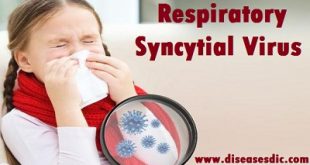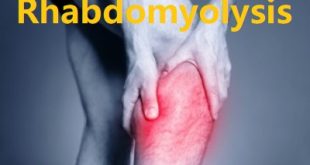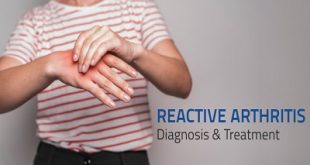Introduction
Rhabdomyosarcoma (RMS) is a type of soft tissue sarcoma (tumour). Fewer than 60 children are diagnosed with rhabdomyosarcoma in the UK each year. Most of them are younger than 10 years old. It is more common in boys than girls.
More children than ever are surviving childhood cancer. There are new and better drugs and treatments, and we can now also work to reduce the after-effects of having had cancer in the past.
It is devastating to hear that your child has cancer, and at times it can feel overwhelming. There are many healthcare professionals and support organizations to help you through this difficult time.
Understanding more about the cancer your child has and the treatments that may be used can often help parents to cope. We hope you find the information here helpful. Your child’s specialist will give you more detailed information and if you have any questions it is important to ask the specialist doctor or nurse who knows your child’s individual situation.
Types of rhabdomyosarcoma
There are 2 main types of RMS, along with some less common types.
Embryonal rhabdomyosarcoma (ERMS)
ERMS usually affects children in their first 5 years of life, but it can occur at older ages as well.
ERMS tends to occur in the head and neck area, bladder, vagina, or in or around the prostate and testicles.
Two subtypes of ERMS, botryoid and spindle cell rhabdomyosarcomas, tend to have a better prognosis (outlook) than the more common conventional form of ERMS.
Alveolar rhabdomyosarcoma (ARMS)
ARMS typically affects all age groups equally. It makes up a larger portion of RMS in older children, teens, and adults than in younger children (because ERMS is less common at older ages).
ARMS most often occurs in large muscles of the trunk, arms, and legs.
ARMS tends to grow faster than ERMS, and it usually requires more intense treatment. However, in some cases of ARMS, the cancer cells lack certain gene changes, which makes these cancers act more like ERMS (and allows doctors to give less intense treatment).
Anaplastic rhabdomyosarcoma and undifferentiated sarcoma
Anaplastic rhabdomyosarcoma (also called pleomorphic rhabdomyosarcoma) is an uncommon type that occurs mainly in adults and is very rare in children.
Some doctors also group undifferentiated sarcomas with the rhabdomyosarcomas. Using lab tests, doctors can tell that these cancers are sarcomas, but the cells don’t have any features that help classify them further.
Both of these uncommon cancers tend to grow quickly and usually require intensive treatment.
Pathophysiology
The tumor is believed to arise from primitive muscle cells, but tumors can occur anywhere in the body; however, a primary bone rhabdomyosarcoma has not been reported. The most common sites are the head and neck (28%), extremities (24%), and genitourinary (GU) tract (18%). Other notable sites include the trunk (11%), orbit (7%), and retroperitoneum (6%). Rhabdomyosarcoma occurs at other sites in less than 3% of patients. The botryoid variant of ERMS arises in mucosal cavities, such as the bladder, vagina, nasopharynx, and middle ear. Lesions in the extremities are most likely to have an alveolar type of histology. Metastases are found predominantly in the lungs, bone marrow, bones, lymph nodes, breasts, and brain.
As with most tumors of childhood, the cause of rhabdomyosarcoma is unknown. The alveolar variant is so named because of the thin criss-crossing fibrous bands that appear as spaces between cellular regions of the tumor (reminiscent of lung alveoli). This variant is usually associated with 1 of 2 chromosomal translocations, namely, t(2;13) or t(1;13). These result in the fusion of the DNA-binding domain of the neuromuscular developmental transcription factors, encoded by PAX3 on chromosome 2 or PAX7 on chromosome 1 to the transcriptional activation domain of a relatively ubiquitous transcription factor, FKHR (or FOXO1a), which is encoded on chromosome 13. Less common translocations involving the PAX genes have been found in some rare cases.
The resulting hybrid molecule is a potent transcription activator. It is believed to contribute to the cancerous phenotype by abnormally activating or repressing other genes. The embryonal subtype usually has a loss of heterozygosity at band 11p15.5; this observation suggests the presence of a tumor suppressor gene. Other molecular aberrations that may provide clues to the origin of the tumor and that may be useful for future treatment strategies include TP53 mutations (which occur in approximately one half of patients), an elevated N-myc level (in 10% of patients with ARMS), and point mutations in N-ras and K-ras oncogenes (usually embryonal). In addition, levels of insulinlike growth factor-2 may be elevated, suggesting pathways involving autocrine and paracrine growth factors.
Causes
It’s not clear what causes rhabdomyosarcoma.
Doctors know that rhabdomyosarcoma begins when a cell develops changes in its DNA. A cell’s DNA contains the instructions that tell a cell what to do. The changes tell the cell to multiply quickly and to go on living when healthy cells would normally die. The result is a mass (tumor) of abnormal cells that can invade and destroy healthy body tissue. The abnormal cells can break away and spread (metastasize) throughout the body.
Risk Factors for Rhabdomyosarcoma
A risk factor is anything that affects the chance of having a disease such as cancer. Different cancers have different risk factors.
Lifestyle-related risk factors such as body weight, physical activity, diet, and tobacco use play a major role in many adult cancers. But these factors usually take many years to influence cancer risk, and they are not thought to play much of a role in cancers that are more common in childhood, including rhabdomyosarcoma (RMS).
Age and gender
RMS is most common in children younger than 10, but it can also develop in teens and adults. It is slightly more common in boys than in girls.
Inherited conditions
Some people have a tendency to develop certain types of cancer because they have inherited changes in their DNA (genes) from their parents. Some rare inherited conditions increase the risk of RMS (and usually some other tumors as well):
- Members of families with Li-Fraumeni syndrome are more likely to develop sarcomas (including RMS), breast cancer, leukemia, and some other cancers.
- Children with Beckwith-Wiedemann syndrome have a high risk of developing Wilms tumor, a type of kidney cancer, but they are also more likely to develop RMS and some other types of childhood cancer.
- Neurofibromatosis type 1, also known as von Recklinghausen disease, usually causes multiple nerve tumors (especially in nerves of the skin), but it also increases the risk of RMS.
- Costello syndrome is very rare. Children with this syndrome have high birth weights but then fail to grow well and are short. They also tend to have a large head. They are prone to develop RMS as well as some other tumors.
- Noonan syndrome is a condition in which children tend to be short, have heart defects, and can be slower than typical children in developing physical skills and learning things. They are also at higher risk for RMS.
These conditions are rare and account for only a small fraction of RMS cases. But they suggest that the key to understanding RMS might come from studying genes and how they work in very early life to control cell growth and development.
Exposures before birth
Some studies have suggested that being exposed to x-rays before birth might be linked with an increased risk of RMS in young children. Parental use of drugs such as marijuana and cocaine has been suggested as a possible risk factor as well. But the studies that have found these links have been small, and more research is needed to see if these factors are truly linked to RMS.
What are the symptoms of Rhabdomyosarcoma in a child?
Symptoms depend on the location and the size and of the tumor. There may be no symptoms until the tumor is very large. The main symptom may be a lump or swelling that may be painful. Other symptoms can occur a bit differently in each child.
A growth near the eye can cause:
- Bulging eye or the eyes seem to be crossed
- Trouble with vision
A growth in the ear or sinuses can cause:
- Ear pain
- Headache
- Sinus congestion
A growth in the urinary or reproductive organs can cause:
- Bleeding
- Pain when urinating
- Pain with bowel movements
A growth in the abdomen can cause:
- Pain
- Vomiting
- Trouble having bowel movements (constipation)
Symptoms of advanced rhabdomyosarcoma may include:
- Bone pain
- Constant cough
- Weakness
- Weight loss
The symptoms of rhabdomyosarcoma can be like other health conditions. Make sure your child sees a healthcare provider for a diagnosis.
What are the potential complications of rhabdomyosarcoma?
Complications from the tumor itself depend on the location and size of the tumor. The tumor may press on important structures such as the:
- Lungs
- Intestines
- Nerves
- Blood Vessels
The tumor may invade and damage nearby tissues as well. If the tumor metastasizes, meaning cells break off and end up in other locations such as the following, new tumors can grow in these organs:
- Bone
- Brain
- Liver
- Lung
In these locations, tumors can cause extensive and life-threatening damage.
How is Rhabdomyosarcoma diagnosed?
To diagnose rhabdomyosarcoma, a healthcare provider will perform:
- Health history to learn about symptoms and risk factors for the disease.
- Physical exam to look for any signs of disease, such as a lump.
- Tests that take pictures inside the body, such as X-ray, MRI, CT scan.
- Tests that look for cancerous cells in the body, such as a PET scan (positron emission tomography) or bone scan.
A healthcare provider might also order some tests to remove a sample of tissue from the body for testing. Examples include:
- Tumor Biopsy: Biopsy is the only way to confirm cancer. It can be done several different ways, depending on where cancer is suspected. Biopsy takes a small amount of tissue from the tumor for examination under a microscope.
- Bone marrow biopsy: Bone marrow biopsy uses a needle to remove a small amount of bone, blood and bone marrow, usually from one or both hip bones.
- Lumbar puncture: Also called spinal tap, this test uses a needle to take fluid from the spine for testing.
Staging and Grouping
The “severity” of a rhabdomyosarcoma is further defined by figuring out the stage or group of the cancer.
There are 4 stages of rhabdomyosarcoma:
- Stage I: Stage I tumors are found in “favorable sites” such as orbital (around the eye), head and neck, in the reproductive organs (such as the testes or ovaries), the tubes connecting the kidneys to the bladder (the ureters), the tube connecting the bladder to the outside (urethra) or around the gallbladder. These tumors may or may not have spread to lymph nodes.
- Stage II: Stage II tumors have not spread to lymph nodes, are no larger than 5 cm (2 1/2 inches), but are found in “unfavorable sites” such as any of the sites not mentioned under stage I.
- Stage III: The tumor was present in an unfavorable site and may or may not have spread to lymph nodes or be greater than 5 cm.
- Stage IV: A cancer of any stage or lymph node involvement that has spread to distant sites.
There are also 4 groups of rhabdomyosarcomas:
- Group I: Group 1 includes tumors that can be completely removed with surgery and have not spread to lymph nodes.
- Group 2: Group 2 tumors can be removed with surgery but there are still cancer cells present at the margins (on the edge of the removed tumor), or the cancer has spread to lymph nodes.
- Group 3: Group 3 tumors are those that have not spread, but are unable to be removed with surgery for some reason (often due to the location of the tumor).
- Group 4: Group 4 tumors include those that have spread to distant regions of the body.
Based on the above stages and groups, rhabdomyosarcomas are then classified by risk into:
- Low-risk childhood rhabdomyosarcoma
- Intermediate-risk childhood rhabdomyosarcoma
- High-risk childhood rhabdomyosarcoma
Treatment of Rhabdomyosarcomas
Rhabdomyosarcomas are rare tumours and should be treated at specialist centres. Treatment will depend on the size of the tumour, its position in the body and whether it has spread.
The three main types of treatment for soft tissue sarcomas are chemotherapy, surgery and radiotherapy. Your child may have a combination of treatments.
Chemotherapy
Chemotherapy is the use of anti-cancer (cytotoxic) drugs to destroy cancer cells. It can be given:
- to shrink the tumour before surgery
- after surgery to reduce the risk of rhabdomyosarcoma coming back
The drugs used and the length of treatment depends on the type and stage of the rhabdomyosarcoma.
Surgery
If it is possible, your child will have an operation to remove all or as much as possible of the tumour, without damaging surrounding tissue or organs. The operation will depend on the size of the tumour and where it is in your body. The surgeon will explain what is involved. Chemotherapy is usually given before surgery to shrink the tumour and make it easier to remove with surgery. If an operation isn’t possible, both chemotherapy and radiotherapy are given.
Radiotherapy
Radiotherapy treats cancer by using high energy rays, which destroy the cancer cells while doing as little harm as possible to normal cells. It may be given after surgery to the area where the rhabdomyosarcoma started.
Side effects of treatment
The side effects will depend on the treatment being given and the part of the body that is being treated. Your child’s doctor will discuss this with you before treatment starts. Most side effects are short-term (temporary) and gradually disappear once treatment stops.
Chemotherapy may cause side effects such as feeling sick, hair loss, tiredness, and an increased risk of infection. But it can also make your child feel better by relieving any symptoms the tumour is causing.
Radiotherapy can make your child feel tired, and the skin in the area that’s being treated may go red or get darker. Other side effects will depend on the area of the body that is being treated. Your child’s specialist doctor or nurse will explain this.
Late side effects
A small number of children may develop long-term side effects many years after treatment for rhabdomyosarcoma. This depends on the type of treatment your child had. Your child’s doctor or nurse will talk to you about any possible risk of late side effects. Follow-up for children who’ve had cancer includes close monitoring for any signs of any late effects.
Late effects may include a possible reduction in bone growth, infertility, a change in the way the heart and the kidneys work, and a slight increase in the risk of developing another cancer in later life.
Prognosis
The prognosis of rhabdomyosarcoma depends on the location of the primary tumor, the stage and type of the disease and on the treatment used.
While aggressive treatment is usually necessary, most children with rhabdomyosarcoma will survive long-term.
The prognosis of rhabdomyosarcoma depends on the location of the primary tumor, the stage and type of the disease and also on the treatment used.
Individuals with rhabdomyosarcomas of the orbit and genitourinary tract have a better outcome than those with tumors originating in the regions of the extremities and trunk.
In those with localized disease who have been treated with surgery, radiation therapy, and chemotherapy, the overall 5-year survival rate is 80 %.
However, in those with <b>metastatic disease</b> a 5-year event-free survival rate is less than 30%.
In patients with metastatic disease devoid of other high-risk factors (such as unfavorable site, more than 3 sites involved, age younger than 1 year or older than 10 years and bone marrow involvement) have a better prognosis of 50% 3-year event-free survival than those patients with 3 or 4 of these factors.
 Diseases Treatments Dictionary This is complete solution to read all diseases treatments Which covers Prevention, Causes, Symptoms, Medical Terms, Drugs, Prescription, Natural Remedies with cures and Treatments. Most of the common diseases were listed in names, split with categories.
Diseases Treatments Dictionary This is complete solution to read all diseases treatments Which covers Prevention, Causes, Symptoms, Medical Terms, Drugs, Prescription, Natural Remedies with cures and Treatments. Most of the common diseases were listed in names, split with categories.







